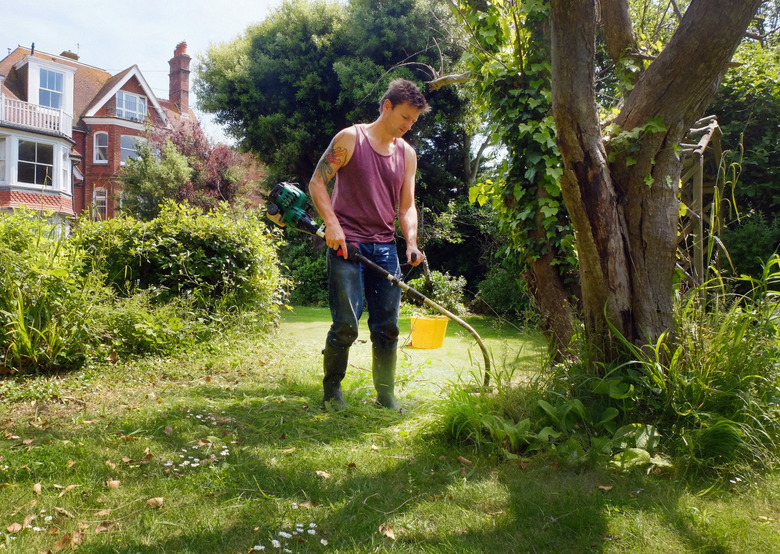How To Troubleshoot And Repair A Weed Eater Pull Cord
Weed Eater is the brand name for a particular model of string trimmer, which means that while all Weed Eaters are string trimmers, not all string trimmers are Weed Eaters. Whatever you happen to call your string trimmer, if it has a gas-powered engine, it has a pull cord to start it, and if that cord doesn't work, neither will the string trimmer.
Servicing the pull cord on a lawn mower is usually simple, but not so on a string trimmer. The problem is that you usually have to disassemble the entire motor housing to get to the pull cord recoil housing. Once you do, you're probably going to have to replace the spring because that's the part that fails most often. You might also have to replace the cord itself or — if it has cracked — the entire pulley mechanism.
What Can Go Wrong With a Pull Cord?
The three most common problems that can arise with a pull cord are that:
- The cord is broken.
- The cord is stuck.
- The cord won't retract.
You usually need access to the recoil mechanism to fix these problems, although if the cord is simply stuck, you might be able to free it by giving it an extra-hard tug. If the cord won't retract, it may also be because something is tangled inside the recoil housing, but more often, the problem is a broken spring. Either way, you need to get into the recoil mechanism to fix it.
How to Access the Recoil Mechanism
On some string trimmers, the starter recoil mechanism is mounted on the engine housing, often near the muffler. If yours is one of these, all you have to do to uncover the starter is remove a few screws and a plastic cover. On some models, however, a fair amount of extra disassembly is required because the recoil mechanism is inside the engine housing directly behind the clutch. To get to it, you have to do the following, using your owner's manual as a guide for model-specific procedures:
1. Remove the Trimmer Shaft From the Engine Housing
Using a screwdriver, remove the screws holding the trimmer shaft in place and disconnect any wires. Disconnect the throttle cable from the carburetor using needle-nose pliers to lift it off its bracket. Separate the shaft and set it aside.
2. Bind the Piston
Remove the spark plug and stuff a rag or piece of rope into the spark plug hole. This procedure is necessary to prevent the engine from turning when you remove the clutch drum.
3. Unscrew and Remove the Clutch Drum
Insert a screwdriver into the shaft in the middle of the clutch drum and turn it counterclockwise to remove the screw. Pull the drum off the shaft.
4. Remove the Clutch Plates
Wedge a flat-head screwdriver on the end of one of the clutch plates and tap it with a hammer to turn the plate counterclockwise. The shock should free it enough to allow you to unscrew it by hand. Repeat with the other clutch plate.
5. Disassemble the Motor Housing
Remove the screws connecting the two halves of the motor housing and separate the halves to expose the motor and the starter assembly. Depending on the model, you may have to unscrew and remove a retaining plate to access the recoil mechanism.
Servicing the Recoil Mechanism
The pulley is usually held to the shaft by a retaining ring that you should be able to pull off with your fingers or with pliers. You'll find a spring under this ring. Be sure to save it. Once the ring and spring are gone, you can remove the pulley. Behind it, you'll find a recoil spring, much like the one you see in mechanical watches. If you have to replace this spring, which you probably do, purchase a kit that includes both the spring and its housing. You don't want to get stuck with the job of forcing a new spring into the old housing.
To reassemble the starter mechanism, ensure the recoil spring is in place; then place the pulley on the shaft, align it with the notches, and push it down. Turn the pulley six or seven times counterclockwise to wind the spring and maintain tension by pushing down. Thread the cord through the motor housing and the pulley and tie a knot in the end. Replace the pulley spring and the pulley cap while you continue to maintain tension on the pulley. After that's done, allow the pulley to slowly recoil, which will automatically wind the cord until the handle is flush against the motor housing. You're now ready to reassemble the trimmer by reversing the disassembly procedure.
